This post may contain affiliate links, which means I’ll receive a commission if you purchase through my links, at no extra cost to you. Please read full disclosure for more information.
Ciabatta bread is a white Italian bread, a classic of the Italian boot. With its soft interior and honeycombed crumb, it's ideal for a savoury sandwich or table bread...or as a sweet breakfast or snack!
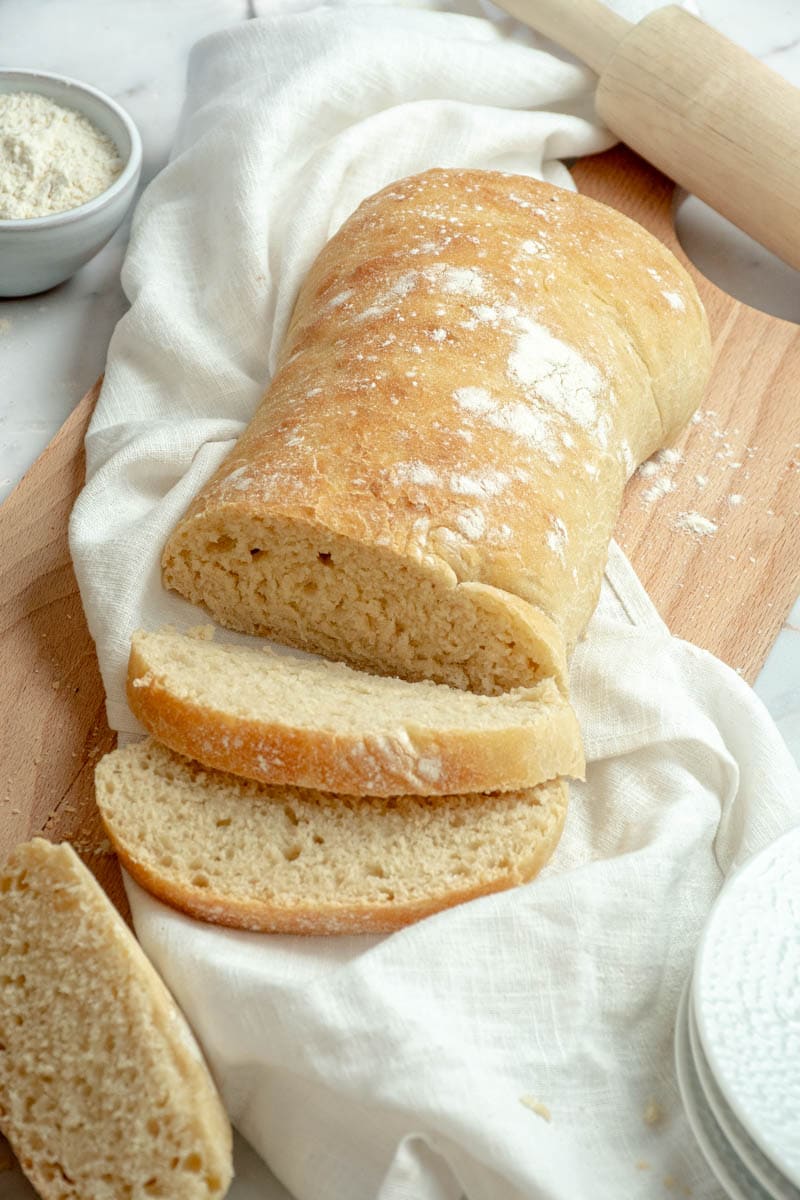
Here's a recipe for unleavened Ciabatta. You don't need a breadmaker either, but you will discover the magic of the biga (don't panic, I'll explain what it is)!
Table des matières
💙 Why you'll love it
- This Ciabatta is vegan and dairy-free.
- It requires just 5 ingredients.
- With my advice, it's easy to make.
- It's super gourmet and makes it easy to travel all the way to Italy!
💧 Ingredients
You can find a full list of ingredients and measurements in the recipe card below.
- Flour - I use a mix of bread flour and all-purpose flour.
- Water: the special feature of Ciabatta bread is its high moisture content.
- Instant dry yeast
- Olive oil: use a good quality one if possible, such as extra virgin olive oil.
- Salt: fine, so that it blends well with the dough.
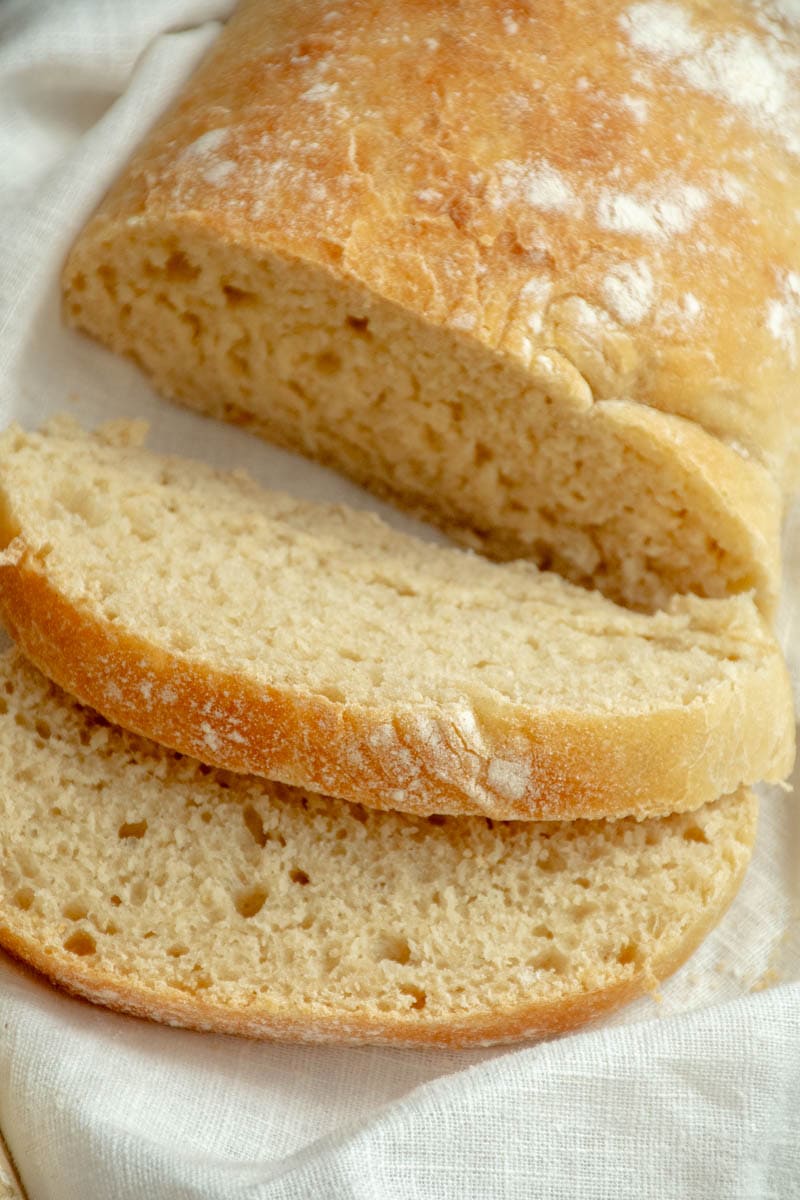
🤔 What is biga?
It's a pre-ferment (like poolish or sourdough) used in Italian baking. Thanks to the biga, you'll have a well-celled bread that's easier to digest and tastes better. It can also be used in Neapolitan pizzas. To create it, you only need 3 ingredients: flour, water and yeast.
🥰 Chef's tips
Preparation
- As European, I'm used to working in grams and milliliters. For savory dishes, the American measuring system can work just perfectly most of the time. But for anything sweet, I really recommend using a digital scale, which is much more precise. That way, you'll be sure to succeed with your recipes.
- Never put instant dry yeast in direct contact with salt, as this will kill it. Follow the order of ingredients: flour, yeast, water, olive oil and salt.
- Do not add flour at any time.
Lifts
- To ensure that the dough rises well, I place cling film on the bowl and tape it down so that no small trickle of air can get through. You can also use a bee-wrap. A simple tea towel, as often seen in recipes, is not enough.
- For room-temperature rising, the dough should be kept in a warm place, at around 85°F/30°C. In winter, I turn on my oven at 85°F/30°C. Once it has reached temperature, I turn it off and leave it to cool, with the door open, for 10 minutes. If, like me, you have a thermometer, even better! Then I put my bowl with the dough in the oven.
- Make sure you follow the three-rising schedule: Ciabatta bread takes time, but it's worth it, so don't rush the process!
Cooking
- Turn on your oven 20 minutes before the end of the last rise, so that it's warm when the bread goes in.
- When you put the bread in the oven, add a large container of water: this is what will ensure a slightly crispy crust.
- Baking time will vary according to the size of your loaf. For 14-17 oz / 400-500 g of flour, allow about 25 minutes. If you make smaller loaves, the time will be reduced accordingly.
- Prefer static heat/natural convection. Rotating heat can have a detrimental effect on breads: overcooked top and still uncooked interior, dried-out bread, etc...
- Do not open your oven during cooking.

💡 Frequently Asked Questions
I use a mix of bread flour and all-purpose flour, which works perfectly.
It was born in Veneto in the 20th century. A former racing driver, Arnaldo Cavallari, became passionate about baking and experimented with all sorts of things, until he came up with the Ciabatta.
Yes, you can make Ciabatta with olives or herbs, for example.
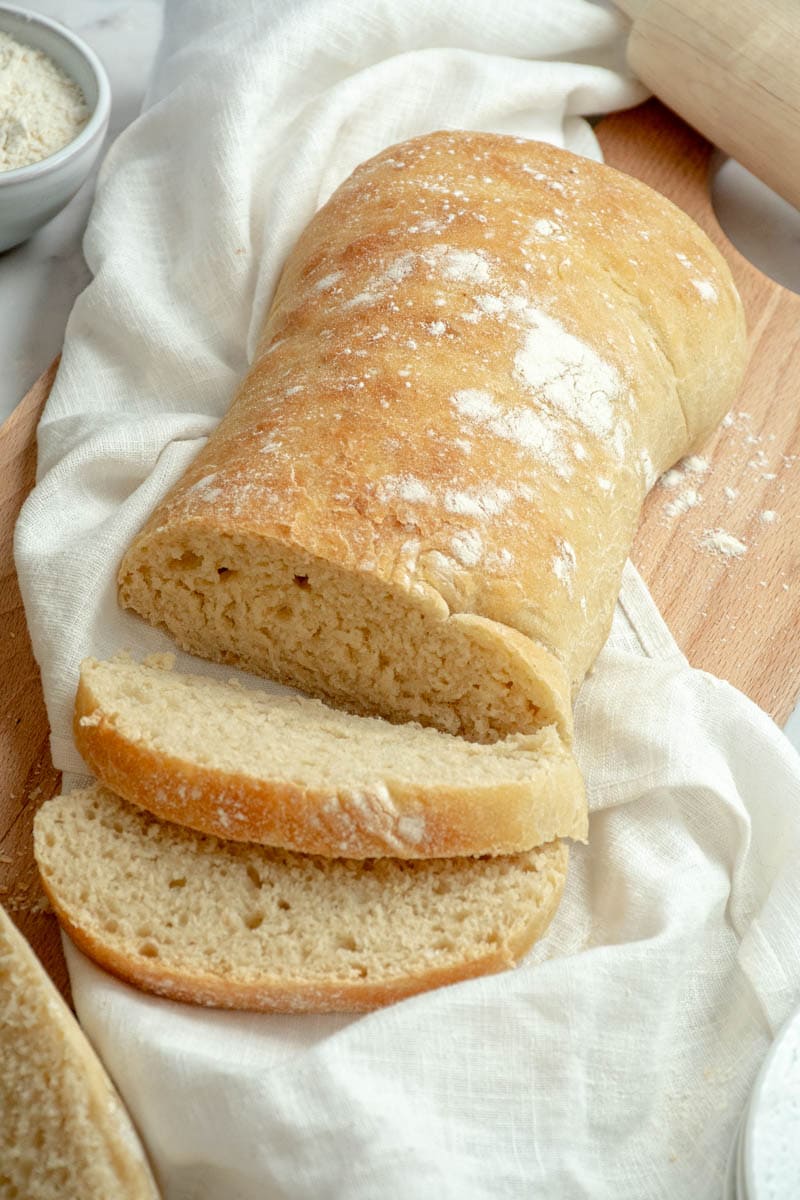
✨ What to serve Ciabatta bread with?
- To replace the naan in this naan sandwich or focaccia in this burrata and spring vegetables sandwich.
- To make "Ciabatta sandwiches", like this Italian Croque Monsieur or this Banh Mi.
- As an accompaniment to a soup, such as Thai soup (shrimp, tomatoes, spices and coconut milk) or Easy French onion soup.
- As a base for toast or bruschetta.
- To make a Ciabatta burger.
- For breakfast with a good spread.
- Once stale, the bread can be used to make croutons, breadcrumbs or French toast.
❄️ Storage / freezing
Contrary to popular belief, I don't advise you to "keep" your Ciabatta... It's best to eat it the day it's cooked and freeze the rest. To do this, cut into thin slices, place in a freezer bag, write the date on the bag and place in your freezer. Simply toast the slices of bread you need.
🇮🇹 Other Italian gems
- Italian Panzerotti (fried pizza turnovers) with tomato, mozzarella and Parma cheese
- Easy Marry Me chicken pasta
- Italian-style eggplant involtini with 3 cheeses
If you make this Ciabatta bread, it would be so nice to leave me a comment and rate the recipe ⭐️⭐️⭐️⭐️⭐️. You can also tag me on Instagram, Pinterest, Facebook or Tik Tok, or even send me a photo, I love seeing my little dishes in your homes!
📖 Recette
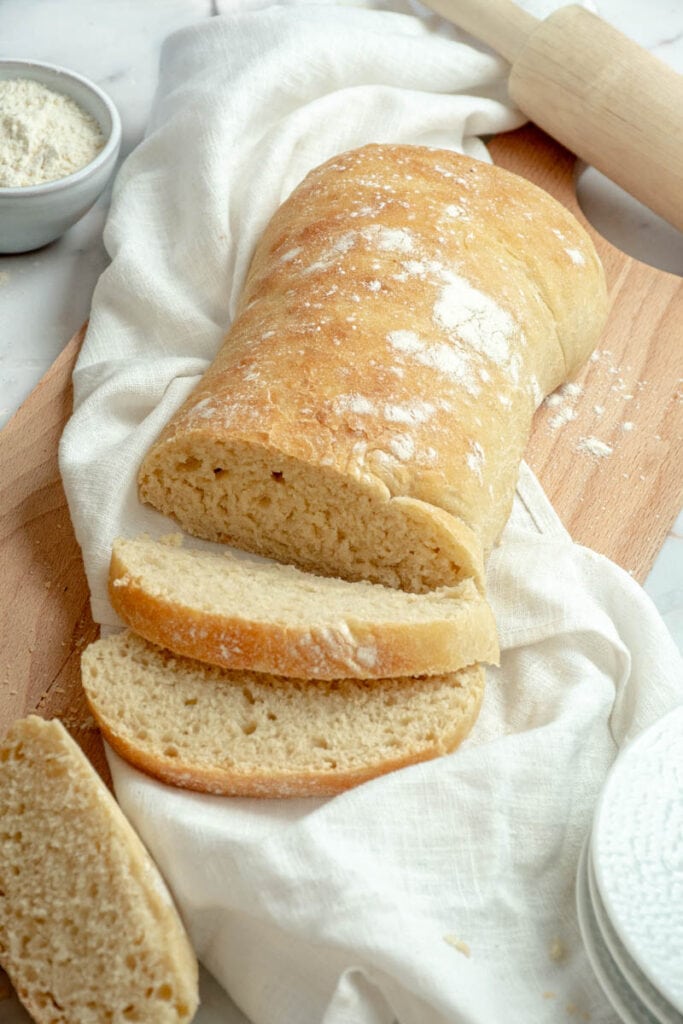
Ciabatta bread
Ingredients
For the Biga:
- ½ teaspoon instant dry yeast (2g)
- 2 cups strong bread flour with a protein content of approximately 12-13% (250g)
- ½ cup water (110ml)
For the Ciabatta
- 3 2/8 cups all-purpose flour (400g)
- 1 ⅓ cups water (305g)
- 1 teaspoon instant dry yeast (3g)
- 3 ⅛ tablespoons olive oil (44ml)
- 1 teaspoon fine salt (6g)
Instructions
The day before: the biga
- Mix the yeast and water in a small bowl. Let stand a few minutes, then mix again.
- In a large bowl (or that of your food processor), place the strong bread flour, then add the water-yeast mixture. Mix with your fingers until you obtain a sort of "crumble": you don't want a smooth, round dough.
- Cover the bowl and leave to rest in the fridge for 24 hours.
D-Day: the Ciabatta
- Rehydrate the biga with half the water (150 g). Add half the flour (200 g) and start the food processor on low speed. Add the remaining water (155 g), then the remaining flour (200 g).
- Add the olive oil and fine salt, and process for 8-10 minutes, until the dough is smooth and homogenous.
- Cover with cling film and leave to rise at room temperature for 45 minutes.
- Fold the dough over four times, cover again and leave to rise for a further 45 minutes.
- Place the dough on a well-floured work surface, flour your fingers well and shape into a square. Also flour a pastry cutter (or knife), cut it in half and place a pinch of flour on each half.
- Cover with a cloth and leave to rise for a final hour at room temperature.
- Twenty minutes before the end of the resting time, turn on your oven to 420°F/215°C in natural convection/static heat mode. Five minutes before the end of the resting time, place a large empty baking dish in the oven and, using floured hands, reshape the Ciabatta.
- At the end of the baking time, pour boiling water into the dish and bake for 25 minutes.



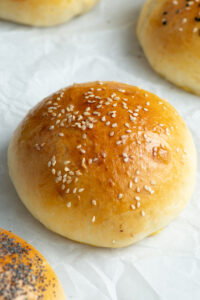
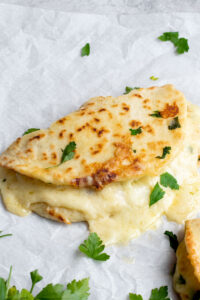
Répondre